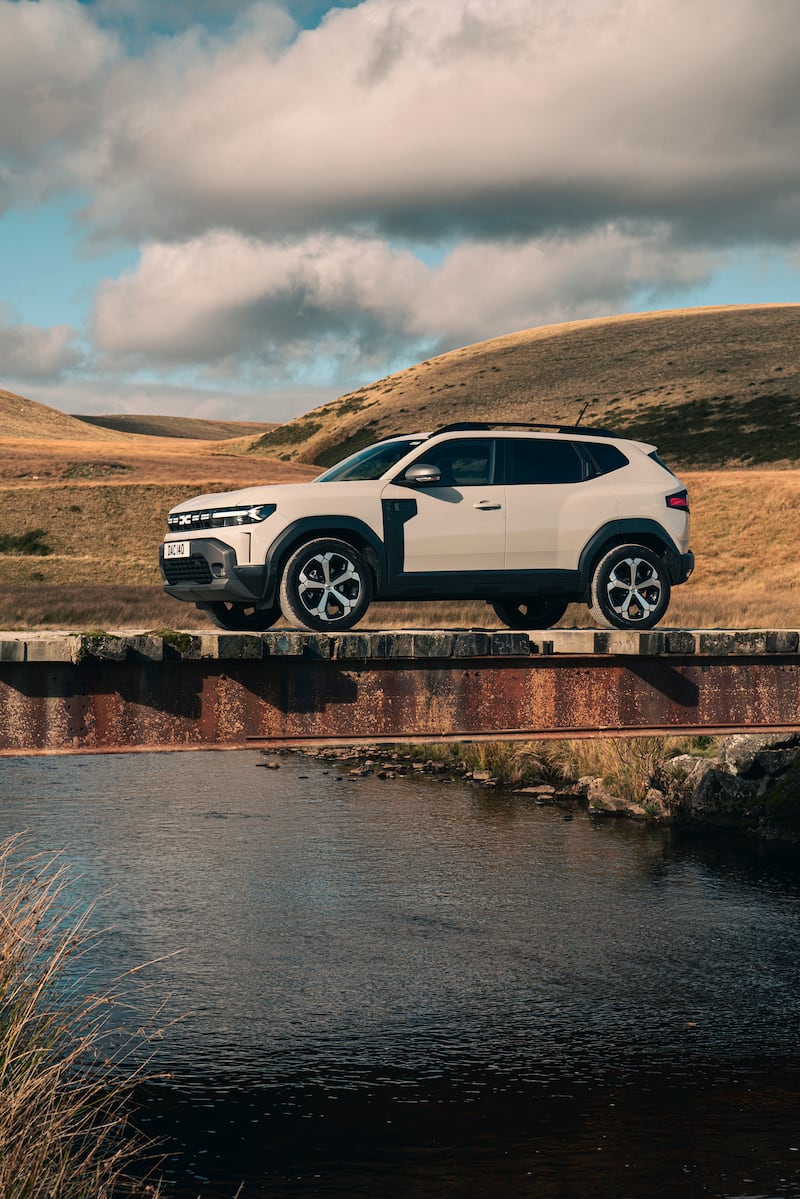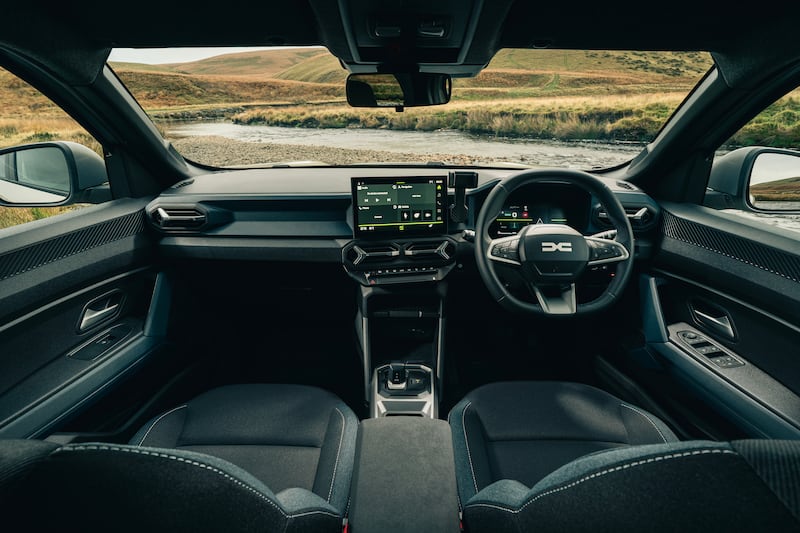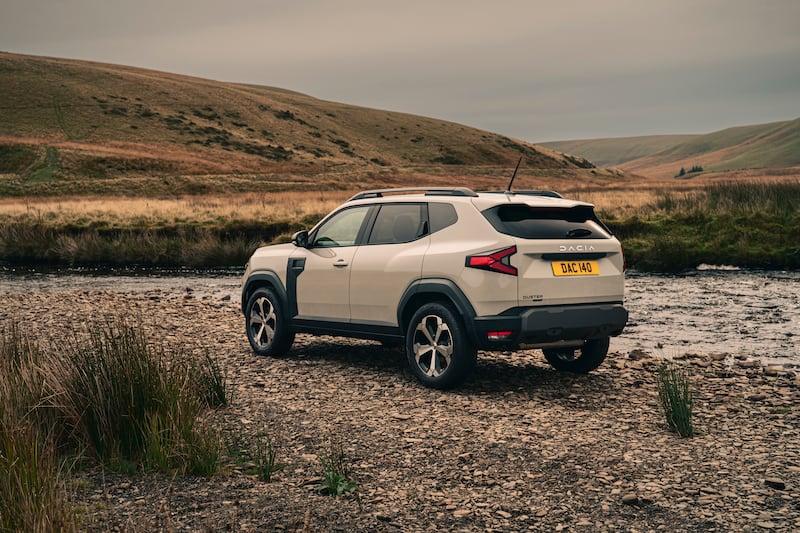There is something so appealing about a car that just gets on with its job. A car that sets out its stall, and delivers on its promises. In a world where technological overkill is the order of the day, something that majors on functionality and simplicity feels like a dip in a refreshing pool.
Perhaps, then, it’s little wonder that Dacia leads the field in several key European markets when it comes to actual customers putting their own hands in their own pockets to buy a new car. Filter out the (often heavily discounted) company car and fleet sales, and this is what people are actually buying.
So the new Duster has to tread a delicate line. Clearly, technology counts when it comes to new cars, but if this new model were to overload itself with screens, gadgets and gewgaws it would likely offend and exclude the company’s huge base of existing Duster customers. A careful balance would have to be struck.
That balance must be struck at a time when Dacia is moving, ever so slightly, away from its bargain bucket roots. When first envisaged, Dacia was supposed to be a style-free zone, with its car rigorously built down to a price with body panels as flat as pancakes in an effort to keep manufacturing costs down.
READ MORE
Now, though Dacia says that it’s on a mission to create cars that customers actively crave, not to mention that through it’s outdoorsy Stepway models and Extreme trim levels it wants to appeal to some of the same customers as Jeep, albeit at a much lower price level.

So, that’s why this new Duster looks so much more visually exciting than the previous model – although it also looks arguably a little more fussy and perhaps even a bit over-styled. I wonder will the previous Duster, in its plain-ness, start to look ever more appealing than this new one. Still, with those ultra-slim headlights and the chunky, castellated bonnet (shades of the original 1970 Range Rover perhaps?) this new Duster certainly looks good, and wears its gorgeous Cedar Green paint work very nicely.
[ Test drive: Audi’s revised e-tron GT proves electric car fun-doubters wrongOpens in new window ]
Look around, and even with the new style, you’ll spot the clever little ways in which Dacia has saved a euro here, 50c there to keep the Duster’s price down to palatable levels (which start at €25,990 for the basic Essential model). The brake lights are in one unit, and don’t stretch across the boot lid, which would have required extra bulbs, extra wiring and extra validation.

The rear door handles are simple plastic flaps integrated into the top rear of the door itself, rather than a pricier painted handle which would have to be integrated into the rear wheel arch flare. The black edges to the bumpers and the “vent” in front of the front doors are all made from recycled and recyclable plastic – which is actually currently more expensive to make than regular plastic, but which will become much more affordable as Dacia spreads out its use to the rest of the model line-up.
Inside, the Duster’s cabin is genuinely strikingly different. The previous Duster had a plain and simple cabin, with lots of cheap plastics, for which you simply had to make the “yeah, but look how little it cost me” excuse.
[ Dacia Spring gives you only what you needOpens in new window ]
For this Duster’s cabin, no excuse is needed. Yes, there are still plenty of cheap plastics, but they’ve been given textures and patterns that makes them more appealing in both visual and tactile senses.
This Extreme-spec model gets nice little copper-coloured highlights too, which add another visual lift. The seats in the front are excellent, and covered not in leather (which Dacia has binned entirely on both cost and environmental grounds, along with chrome trim) but in a cool neoprene-like fabric, again made in part from recycled plastics.

The driving position is excellent, even if taller drivers will find that the windscreen is a touch shallow, and the 10.1-inch touchscreen (standard on all aside from basic Essential models, which instead use a mobile phone clamp and an app) is actually pretty straightforward and easy to use, helped by the fact that Dacia has retained proper physical controls for the air conditioning.
In the back, space is a touch tight if you’re very tall, but six-foot-me was able to comfortably fit in behind my own driving position, while the boot, at 478 litres, (it shrinks to 414 litres for 4x4 models) is generous and well shaped. Dotted around the cabin are also handy little YouClip fixtures, to which you can attach a whole plethora of affordable accessories from extra cup holders to phone holsters, storage trays, and even an LED torch.
Our Duster Extreme test car was, appropriately, the most extreme Duster you can buy, with adaptive four-wheel drive (there’s a display on the touchscreen showing you how much engine power is heading to the back wheels) with a 1.2-litre, three-cylinder turbo petrol engine developing 130hp and 230Nm of torque. It powers those four wheels via a six-speed manual gearbox, and there’s a Land Rover-style selection switch on the centre console that allows you to tweak and tune the four-wheel drive and traction control settings to suit the immediate terrain.
Thus equipped, the Duster – low-geared in first and second – will slither happily about in the mud and mire, thanks to standard-fit all-terrain tyres for the 4WD model. It’s really quite capable, but does that mean you pay a penalty when you’re back on tarmac?

Not really, no. Dacia has given the Duster relatively soft suspension – well, are you buying this in place of a hot hatch? – which allows a degree of body roll, but it’s an agreeable degree. The softness of the springs also means that urban lumps and country road potholes won’t trouble you much. The steering doesn’t have much feel, but it’s well-weighted enough and the Duster feels fundamentally decent to drive. Only a touch of wind noise at higher speeds, along with a sense of breathlessness in those low gears, attempt to spoil the show and neither, to be honest, are much of an issue.
[ Can the Ford Explorer arrive late to the EV party and still impress?Opens in new window ]
Fuel economy is also decent, and we averaged slightly more than 6.0 litres per 100km. If you want to do better than that, skip this four-wheel drive model and go for the front-drive hybrid model instead, which most customers presumably will do. There’s also a basic 1.0-litre three-cylinder turbo petrol for the entry-level model, which does the job just fine.
Doing the job just fine is basically how the Duster goes about life. That’s why it is one of seven finalists for Europe’s Car of the Year. It’s a really well-thought out, well-executed car that remains affordable, but feels like less of a hair-shirt experience than once it would have. It’s practical, affordable, simple, and surprisingly good to drive. Honestly, what more do you want from a new car?
Lowdown: Dacia Duster 1.2 130 4x4 Extreme
Power: 1.2 litre three-cylinder turbo petrol engine with 130hp and 230Nm of torque driving the front wheels through a six gearbox.
0-100km/h: 11.0 secs.
Emissions (motor tax): 135g/km (€210).
Fuel consumption: 6.1l/100km (WLTP).
Price: €34,840 as tested. Duster from €25,990.
Verdict: As well-thought-out a car as you can currently buy. Makes eminent sense.














